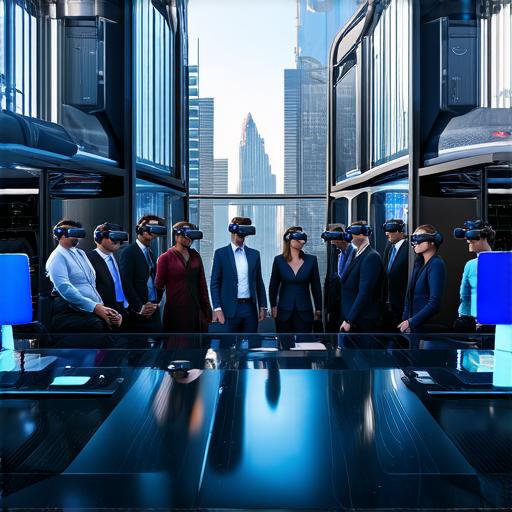Virtual Reality (VR): Types and Characteristics

1. Oculus Rift
The Oculus Rift is one of the most popular VR headsets on the market. It uses a high-resolution display to provide a realistic and immersive experience. The headset has six degrees of freedom (6DOF), which means that users can look around freely in any direction without having to physically move their heads. This makes it ideal for gaming, as well as more niche applications like medical training and engineering design.
2. HTC Vive
The HTC Vive is another popular VR headset, known for its high-resolution displays and 360-degree tracking. It allows users to look around in any direction without having to physically turn their heads. The HTC Vive also has room-scale VR capabilities, which means that the user can move around a physical space while still experiencing virtual reality. This makes it ideal for gaming, as well as more advanced applications like architectural visualization and training simulations.
3. Samsung Gear VR
The Samsung Gear VR is a mobile-based VR headset that uses a smartphone to provide the display. It has a lower resolution than the Oculus Rift and HTC Vive, but it’s more affordable and accessible. The Samsung Gear VR also has 360-degree tracking, allowing users to look around freely in any direction. This makes it ideal for gaming and casual applications like virtual tours.
4. Google Cardboard
Google Cardboard is a low-cost and simple VR headset that uses a smartphone as the display. It has limited functionality compared to other VR headsets, but it’s easy to use and affordable. The Google Cardboard is ideal for beginners or those who want to try out VR without committing to a more expensive headset.
5. PlayStation VR
The PlayStation VR is a console-based VR headset that uses the PlayStation ecosystem to provide content. It has a high-resolution display and 360-degree tracking, making it ideal for gaming and other entertainment applications. The PlayStation VR is also compatible with the Unity game engine, making it a popular choice for developers who want to create games for the platform.
6. Valve Index
The Valve Index is a high-end VR headset that uses room-scale tracking and advanced sensors to provide an incredibly realistic experience. It has a resolution of 2160 x 2160 pixels per eye, making it one of the highest-resolution VR headsets on the market. The Valve Index is ideal for gaming, as well as more advanced applications like engineering design and medical training.
Pros and Cons of Each Type of VR
1. Oculus Rift
- High-resolution display
- 6DOF tracking
- Wide range of content available
Cons: Can be expensive, limited room-scale capabilities.
2. HTC Vive
- High-resolution displays
- 360-degree tracking
- Room-scale capabilities
- Wide range of content available
Cons: Can be expensive, may require a powerful PC to run.
3. Samsung Gear VR
- Affordable
- Mobile-based design
- Easy to use
- Wide range of content available
Cons: Lower resolution than other VR headsets, limited tracking capabilities.
4. Google Cardboard
- Inexpensive and accessible
- Simple design
- Ideal for beginners or casual applications
Cons: Limited functionality compared to other VR headsets.
5. PlayStation VR
- High-resolution display
- Compatible with the PlayStation ecosystem
- Ideal for gaming and entertainment applications
Cons: May require a powerful console to run, limited room-scale capabilities.
6. Valve Index
- Incredible resolution
- Advanced sensors
- Room-scale capabilities
- Ideal for gaming and advanced applications
Cons: Very expensive, may require a high-powered PC to run.
Conclusion
In conclusion, there are different types of virtual reality available, each with its unique features and capabilities. As a developer, it’s important to choose the right VR headset for your application’s needs, budget, and target audience. Understanding the pros and cons of each type of VR will help you make an informed decision and create an immersive experience for your users.
